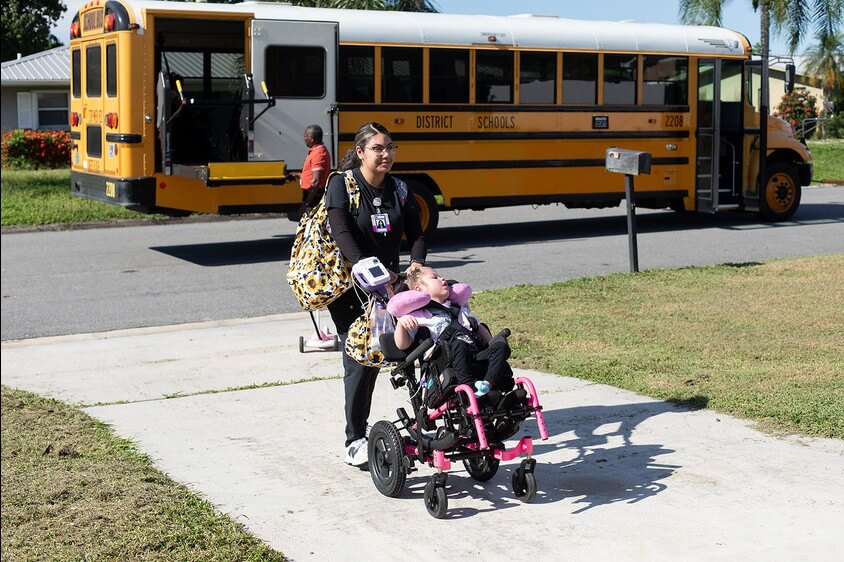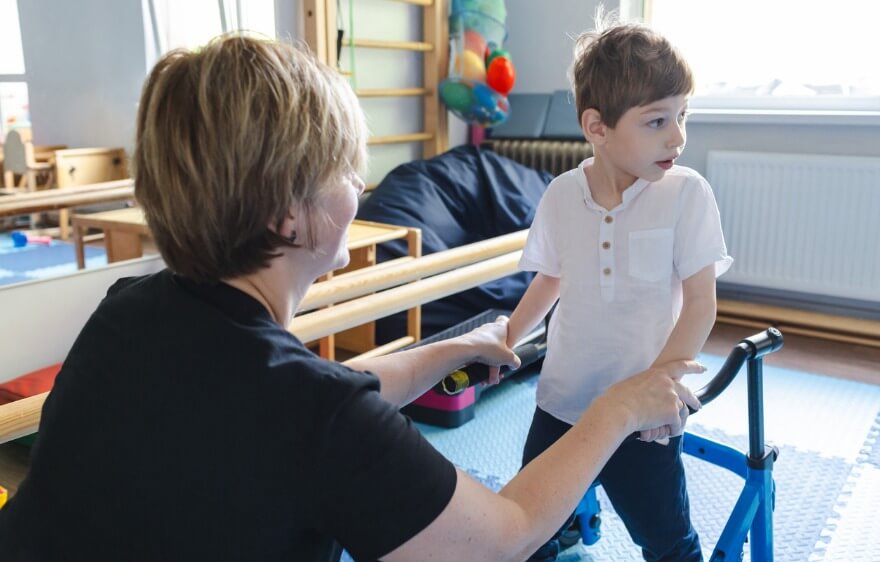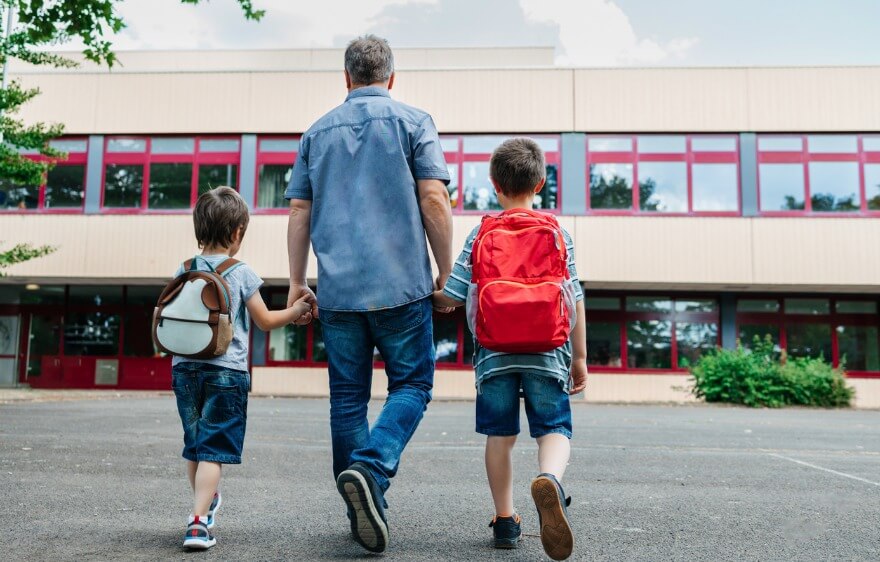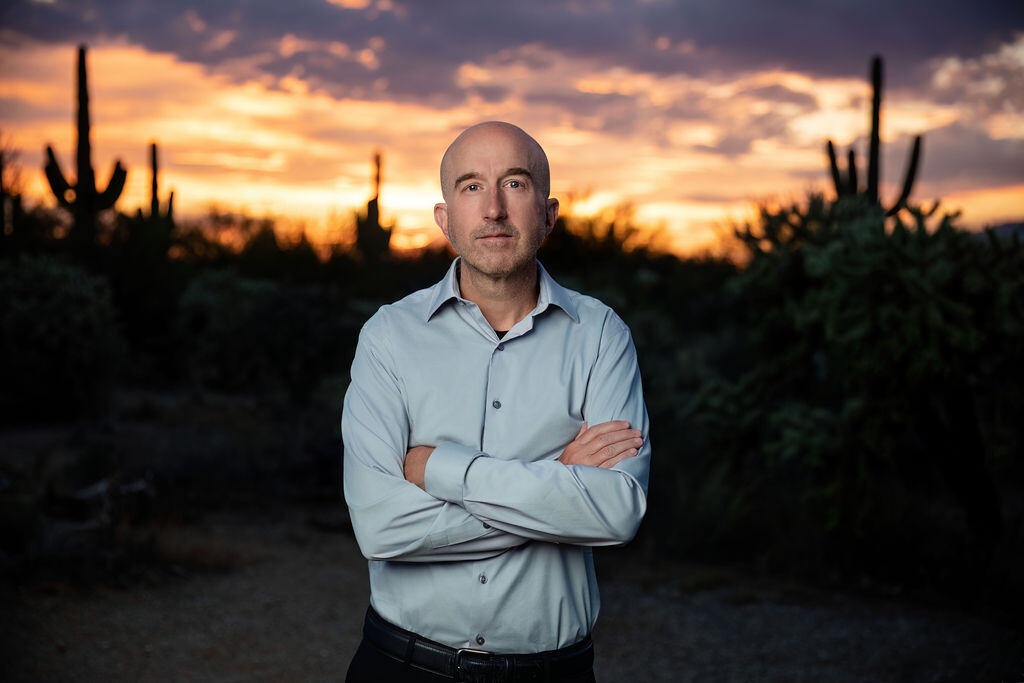It’s old news by now: Millennials are a force to be reckoned with in the workplace. According to a Governance Studies at Brookings report, folks in this age group will comprise 75 percent of the workforce by 2025. The National Center for Education Statistics reports that the median age of new teachers is 26 years old (millennial!), and the most recent data available from the American Speech-Language Hearing Association (ASHA) indicates that 30% of ASHA-Certified SLPs are millennials as well.
Investing in the employees you have is far easier and more cost-effective than recruiting and training replacements, so it’s worthwhile to figure out how to make your district somewhere that millennials want to stay. What’s more, millennials working in the schools bring with them exciting opportunities to redefine what it means to Put Kids First in your district. Check out our new infographic (or read the text below) to learn how you can work together to maximize their special talents and improve every student’s outcome.
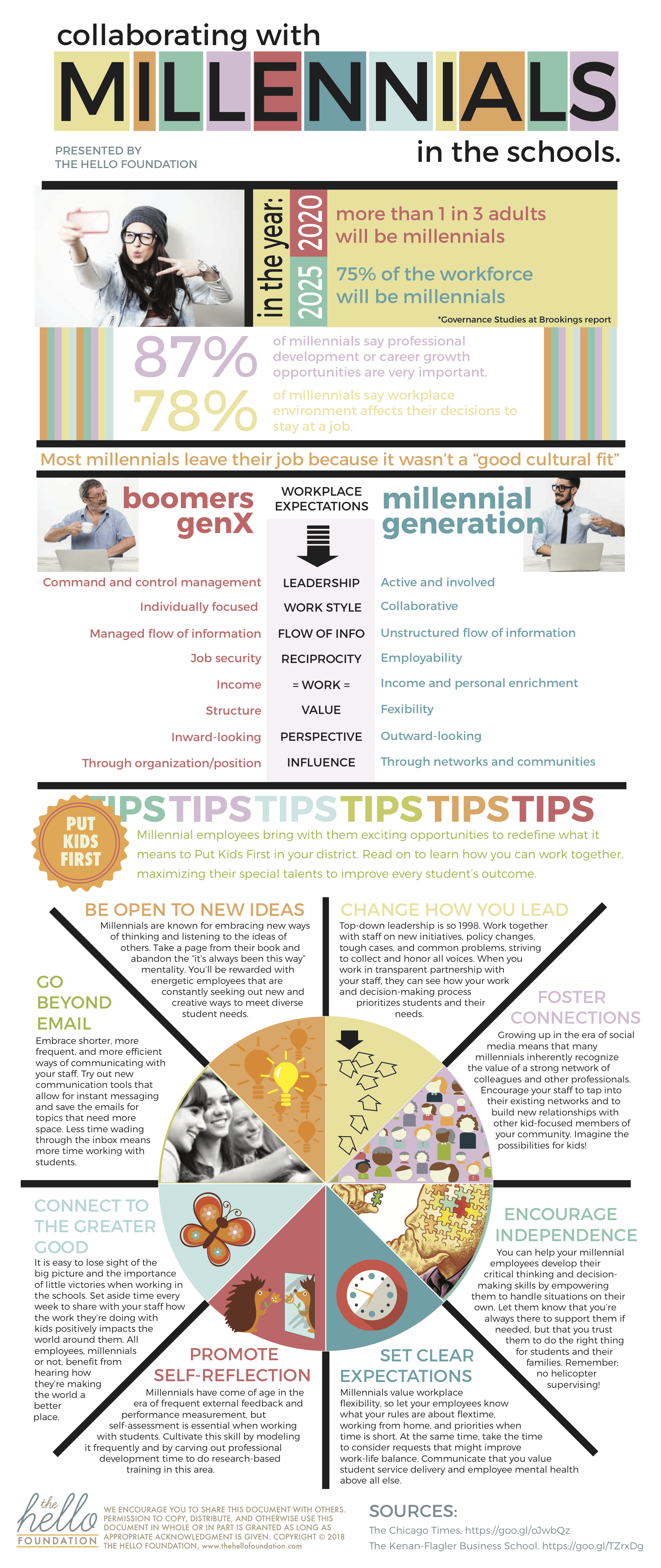
COMMUNICATE EFFECTIVELY
Embrace shorter, more frequent, and more efficient ways of communicating with your staff. Try out new communication tools that allow for instant messaging and save the emails for topics that need more space. Less time wading through the inbox means more time working with students.
BE OPEN TO NEW IDEAS
Millennials are known for embracing new ways of thinking and listening to the ideas of others. Take a page from their book and abandon the “it’s always been this way” mentality. You’ll be rewarded with energetic employees who are constantly seeking out new and creative ways to meet diverse student needs.
ENCOURAGE INDEPENDENCE
You can help your millennial employees develop their critical thinking and decision-making skills by empowering them to handle situations on their own. Let them know that you’re always there to support them if needed, but that you trust them to do the right thing for students and their families. Remember: no helicopter supervising!
SET CLEAR EXPECTATIONS
Millennials value workplace flexibility, so let your employees know what your rules are about flex time, working from home, and priorities when time is short. At the same time, take the time to consider requests that might improve work-life balance. Communicate that you value student service delivery and employee mental health above all else.
CHANGE HOW YOU LEAD
Top-down leadership is so 1998. Work together with staff on new initiatives, policy changes, tough cases, and common problems, striving to collect and honor all voices. When you work in transparent partnership with your staff, they can see how your work and decision-making process prioritizes students and their needs.
PROMOTE SELF-REFLECTION
Millennials have come of age in the era of frequent external feedback and performance measurement, but self-assessment is essential when working with students. Cultivate this skill by modeling it frequently and by carving out professional development time to do research-based training in this area.
CONNECT TO THE GREATER GOOD
It is easy to lose sight of the big picture and the importance of little victories when working in the schools. Set aside time every week to share with your staff how the work they’re doing with kids positively impacts the world around them. All employees, millennials or not, benefit from hearing how they’re making the world a better place.
FOSTER CONNECTIONS
Growing up in the era of social media means that many Millennials inherently recognize the value of a strong network of colleagues and other professionals. Encourage your staff to tap into their existing networks and to build new relationships with other kid-focused members of your community. Imagine the possibilities for kids!
